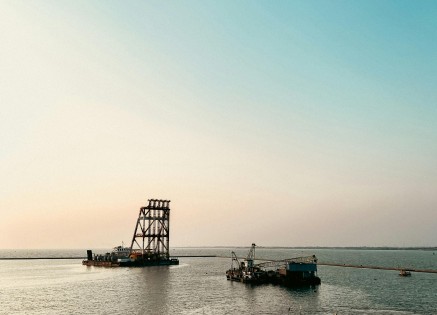Copyright © 2025 lmitac.com All Rights Reserved. Contact - Terms and Conditions - Privacy Policy - Quality Policy - Become an instructor - Vacancies - Sitemap
London Maritime Academy is a trade name for London Premier Groupversion: 2.9.0
London Maritime Academy is a trade name for London Premier Group

Posted on : 6/10/2025, 10:56:36 PM
Offshore Structures are one of (if not the most) unknown and equally important areas of marine engineering. They deliver reliable performance when lives and investments hang in the balance. What exactly makes them special? These systems are your saviours in offshore environments where conventional structures would most definitely fail.
Let’s explore offshore structures and the genius engineering that holds them together, literally.
Offshore structures are facilities that are purpose-built and installed in marine environments to serve operational roles in oil and gas as well as renewable energy.
They are, in most situations, supporting drilling rigs or wind turbines. However, to be as reliable as they need to be, their design must account for severe weather, corrosive seawater, high operational loads, and dynamic ocean forces. Every component, every steel beam and concrete base, must be resilient enough to survive both nature and time.
In contrast to land buildings that are built on solid ground, these structures must perform safely in motion, sometimes hundreds of kilometers from the nearest shore. Why would someone go through all that trouble? Here are a few reasons:

Let’s make one thing clear: offshore structures will never be one block that you can stick anywhere. Each category is uniquely engineered to suit water depth, operational needs, and environmental conditions. Here are the most prominent types:
These are anchored directly to the seabed and are mostly used in waters up to 500 meters deep. This includes:
They’re mostly ideal for oil and gas production where long-term installation is needed.
When it comes to deeper waters, floating platforms are more suitable because they're tethered to the seafloor and thus can move slightly with waves and currents. Like:
Floating structures are also widely used in offshore wind farms, especially in deep-water regions where fixed foundations are not feasible.
As more depth becomes an engineering challenge for offshore structure designers, thus came compliant towers emerged; flexible, slender structures that stick to the bottom but are designed to bend with wave and wind loads. Their flexibility reduces the overall stress, making it suitable for intermediate depths (up to 1,000 meters).
A huge part of designing offshore structures is overcoming the challenges of fluid dynamics, material resilience, and the way a structure would behave under extreme marine conditions.
Similar yet more complicated than the one you learn in Maritime engineering courses, the journey begins with analysing wave spectra to determine peak pressures on submerged piles under a range of sea states. Engineers then often apply Morison's equation to estimate horizontal forces on cylindrical legs when waves and currents interact.
From there, advanced finite-element models must come into play. Such simulations calculate how vertical and lateral forces distribute across the structure, which helps verify load tolerances and safety margins under complex conditions.
P.S. This goes for both supporting fixed drilling platforms and renewable energy systems. These analytical methods remain great tools for structural reliability.
Fatigue analysis takes this a step further. Engineers use probabilistic simulations to predict how cracks might propagate over the structure’s lifetime. Nevertheless, these predictions are not based on theory alone. They get validated through scaled physical tests in certified wave basins. Each experimental campaign feeds the data back into design models to refine accuracy before full-scale construction begins.
Now that the structure is all set, it needs to be maintained. Therefore, to protect against corrosion, especially in steel components, designers calculate allowances that inform the selection of coatings and cathodic protection systems. These safeguards often endure decades of exposure to saline environments, which goes to show how important the engineering process is.
Offshore structures are a cornerstone of modern oil and gas industry innovation. They connect us to energy, data, and solutions that could revolutionise everything one day. The sea of opportunities remains undiscovered, with all the improvements that exist in the world today. So what do you think lays at the bottom of the unknown sea?